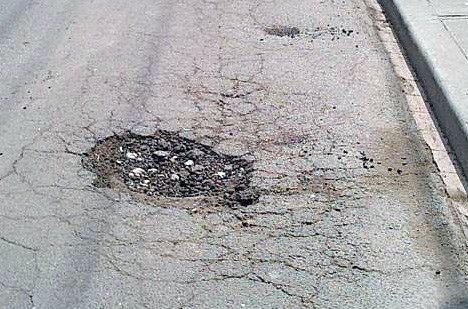By Melanie Jacob
Journal Staff Writer
With the summer weather trying to make its debut, the city is gearing up for more road projects and fixer-uppers.
One of the biggest projects the city will be tackling is a mill-and-pave endeavor for Highway 5, which will cost approximately $775,000. Fortunately, the city was able to procure shared funding and so will only have to pay for half of the amount.
"The largest portion will be between the golf course road and the Feed Rite. That one will be completely resurfaced with a bit of extra asphalt," said Peter Bergquist, director of planning and engineering for the City of Humboldt. "We'll also be repaving in front of the public school where there's some blowout issues where the wheel tracks are."
Aside from that, the city will also be paving the roadway along Saskatchewan Avenue west of 101st Street as well as areas along 4th Avenue, from 8th Street to just after 10th Street.
"We were holding off (on paving Saskatchewan Avenue) because we were thinking we had to put a larger sanitary and force main down those roads," said Bergquist. "But as a result of our planning and engineering for growth study, we won't need that anymore."
The city will be performing various concrete work such as repairing streets with water main breaks and wheelchair installations. They will also be doing surface treatments such as sand slurry seals and microsurfacing, but those would depend on the type of road.
Roads with higher volumes of traffic get higher priority and younger roads receive better quality treatment.
"Microsurfacing is a better quality treatment than slurry seal; it's harder," said Bergquist. "The asphalt underneath is in great shape and hasn't been exposed to the elements, but if the top surface goes too long, it starts cracking. When it gets to that stage, it's at the point of no return."
In other words, the roads that are still in good condition with good asphalt underneath will likely get better surface treatment so as to continue extending its life. For older roads that are already cracking and in poor condition, however, the slurry seal is used as a band-aid until the entire road can be redone.
"We look at the water mains below. If they're old and the roads are on that path, we'll leave them because we know we'll have to replace the water mains in five or ten years," said Bergquist. "There's no point in spending the money on something we're going to have to tear up soon, so we make it functional until we can replace the water main and put the asphalt back on."
Thus, all the roads will eventually be fixed up properly, but some will get done sooner than others due to cost efficiency. It makes more sense to maintain the good condition of one while keeping the other functional until it can be replaced.
"We try to preserve what we have. There's a lot of asphalt on those roads; if we let them go, it'll be far more expensive," said Bergquist. "If you can preserve the asset before it deteriorates to a bad enough state, that's the goal."
Once a road is redone, the city determines what kind of surface treatment it gets according to its age and how much traffic it gets. Unfortunately, the difference in quality treatments is necessary due to the rising costs of products and services.
"When asphalt was cheaper, the practice was to wait until it gets worse and then replace it," said Bergquist. "Now that it's expensive, these alternatives are coming into play because they can extend the life of that asset (road) instead of replacing it."
According to Bergquist, if proper maintenance is done on a road that hasn't deteriorated too much already, it will last for a long time. The integrity of the road would depend on whether the structure is strong enough to handle the traffic and whether or not the asphalt below is being expose to the elements such as water leakage and sunlight.



.png;w=120;h=80;mode=crop)
